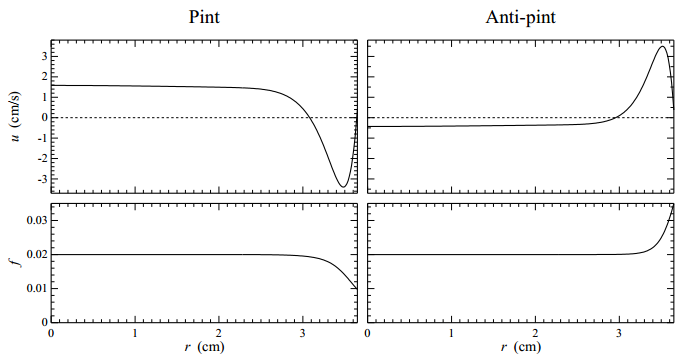A paper in the arXiv, discussed on the Physics arXiv Blog, investigates what the blog post called “one of the more intriguing conundrums in fluid dynamics”: why bubbles in Guinness appear to sink as the drink settles and the head forms.

A recent development apparently showed that the bubbles are not, in fact, sinking but that the liquid circulates in a strange way: downwards near the glass walls and upwards in the interior. This new paper looks at why the liquid circulates in this way. The non-cylindrical shape of the glass causes higher bubble density near its centre, which sets up the observed circulation pattern. You can view a video [885Kb AVI] in which the researchers demonstrate how, when Guinness is poured in a tilted cylinder, “bubbles will be observed to move upwards near its upper surface and downwards near its lower surface”.
The Physics arXiv Blog point points out the importance of the scientific method:
Of course, the essence of experimental science is repeatability. Many readers will not be content with mere visual evidence from a video but insist on repeating this experiment on their own terms, perhaps in a hostelry of their own choosing. Quite right.
Although they also point out the work has serious applications too:
Understanding these types of bubbly flows is important for a number of applications, such as manufacturing champagne glasses engraved with nucleation sites, and widget and similar technologies for promoting foaming in stouts.
Source: Irish Mathematicians Solve The Guinness Sinking Bubble Problem on the Physics arXiv Blog.